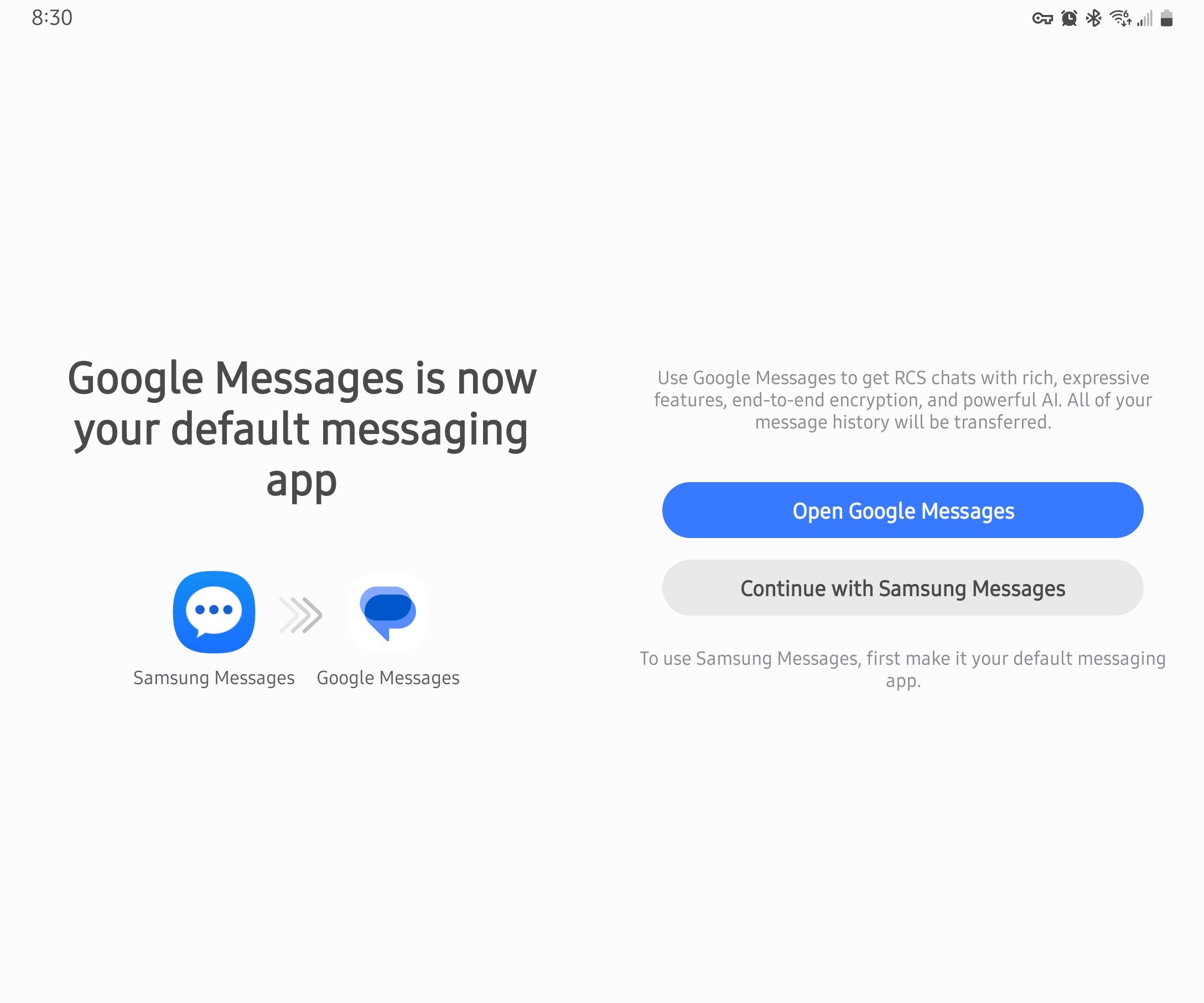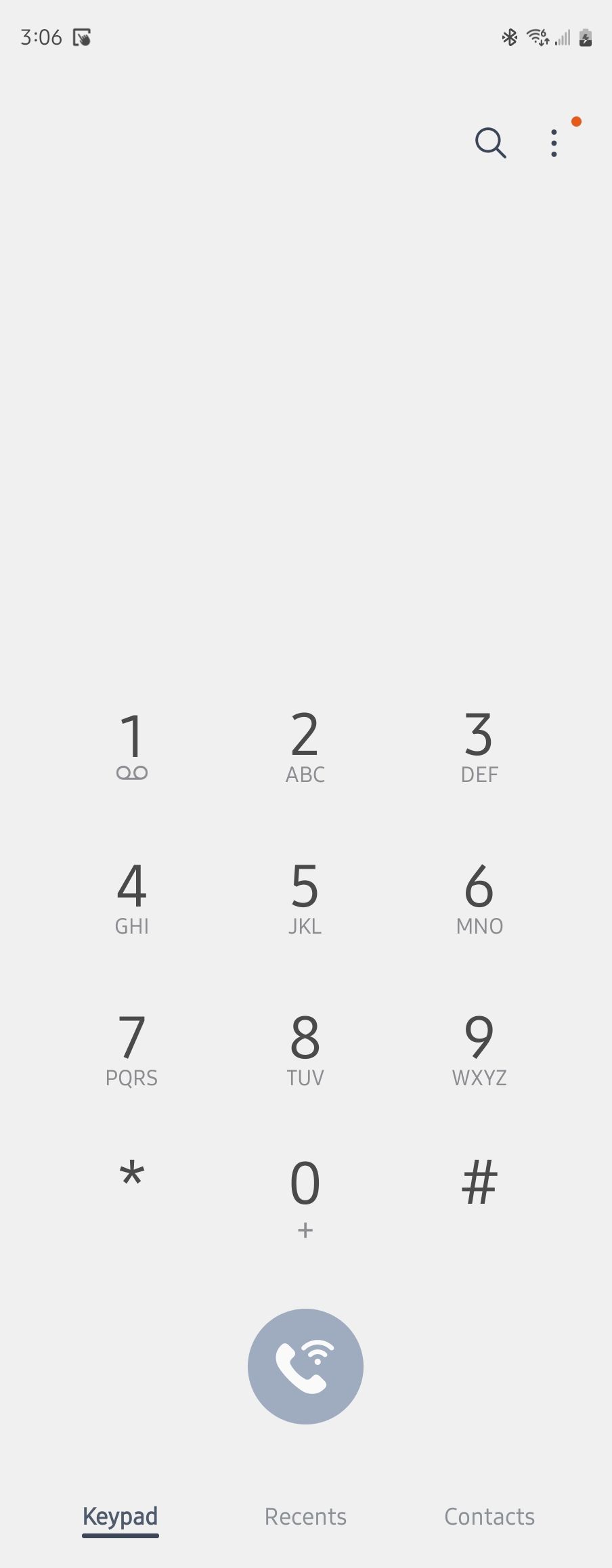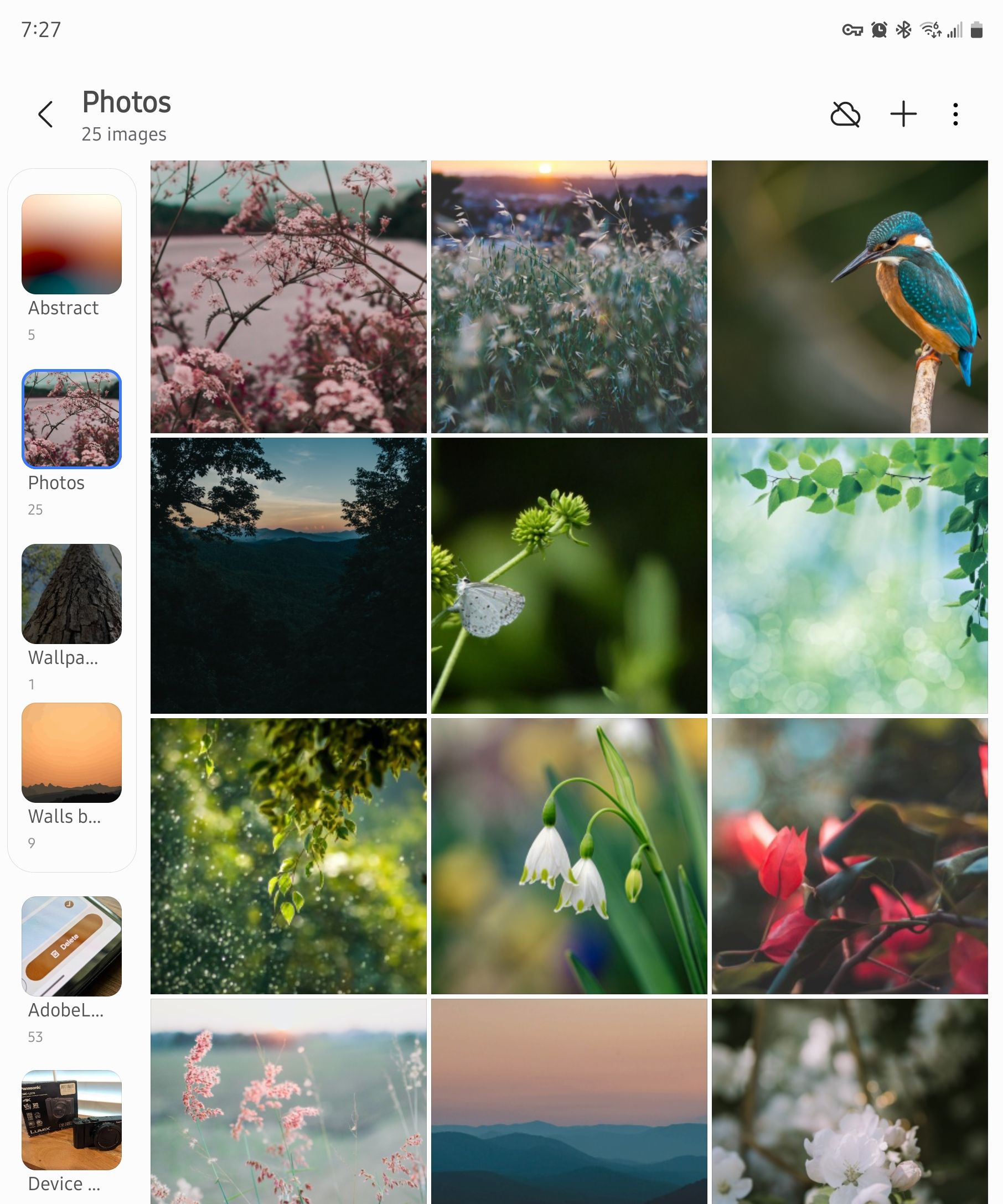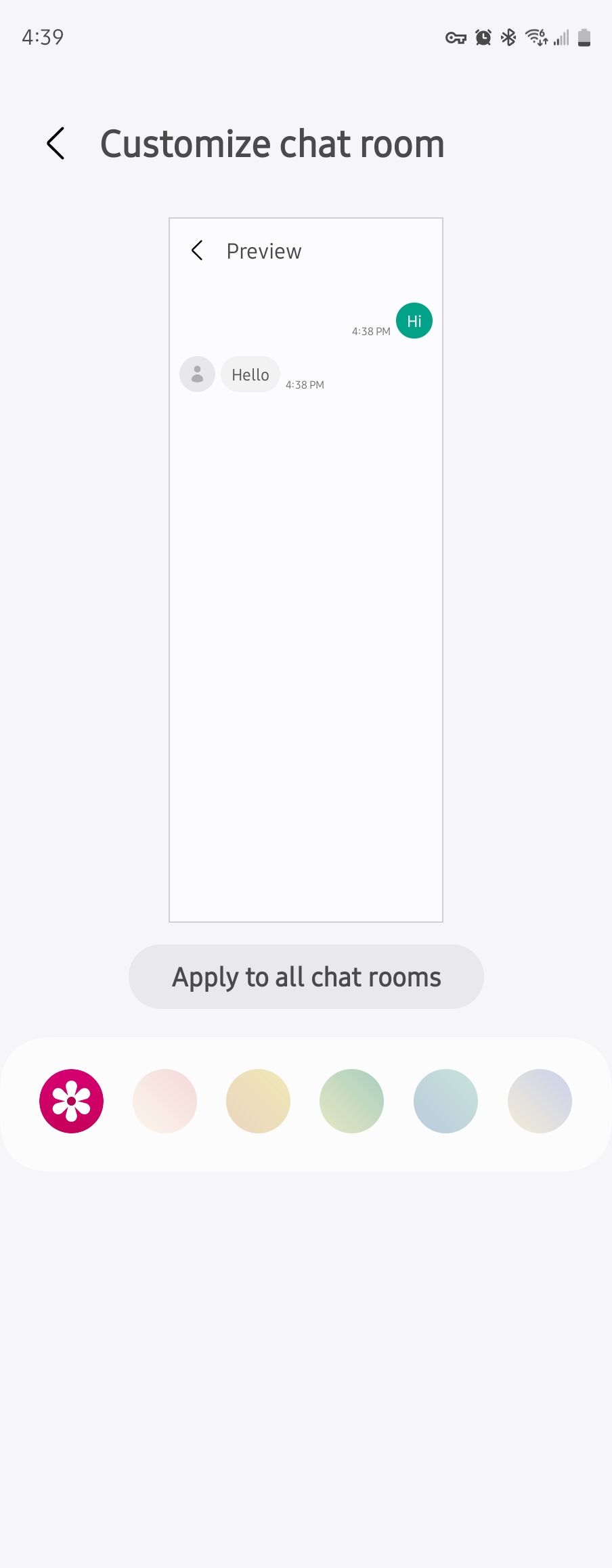Samsung Messages Is Dead, and That’s Not Good for Android
Samsung Messages has long been the text messaging app that comes on Samsung phones. Now, it's gone in favor of Google Messages. While Google Messages may be the better app, that doesn't mean this change is a good thing. In many ways, it's a step backward.
RCS Was Supposed to Replace SMS, Not Become Another Walled Garden

On the surface, Google Messages is a texting app like any other. On the backend, though, it's not an online instant messaging app like WhatsApp or Signal. It's built on RCS, a protocol meant to serve as a replacement for SMS.
RCS stands for Rich Communication Services. It enables features such as read receipts (the checkmarks that appear when someone has received or read your messages), typing indicators (the bouncing dots), reactions (the emojis you can respond to messages with), and high-quality images.
Like iMessage, Google Messages sends full-featured messages to other phones that have Google Messages but falls back to SMS for the rest. Now that Apple is adding RCS support to iMessage, Google Messages is also gaining the ability to send full-featured messages to iPhones as well.
It's worth getting excited about Apple adding RCS support to iMessage. In an ideal world, RCS would serve as an open standard that any RCS app can interoperate with.
With SMS, it doesn't matter which texting app you use. No one knows, and no one cares. It can be Google Messages on your Pixel, iMessage on your iPhone, Samsung Messages on an older Samsung device, a third-party app, or the built-in texting feature on a feature phone. No matter which one you use, the messages are the same.
There is now only one RCS app on Android: Google Messages. Samsung Messages used to have RCS support, but that feature was retired, and now the app as a whole is following suit. There are absolutely valid reasons to prefer Google Messages over Samsung Messages. The sad part is, for all practical purposes, using RCS on Android now means everyone has to consolidate around the same app.
Google Messages Feels, First and Foremost, Like a Google App
Google Messages looks like a Google product. Google branding is present at the top, above your chats, whenever you tap the app icon. When you open settings, you find Google account options first and have to dig deeper to configure the actual app. This leads to the feeling that you're using a Google web service rather than a native app on your phone.

The result is that you aren't just "texting." It isn't even immediately obvious that you're using RCS instead of SMS. What you're doing is using Google Messages, just like iPhone users use iMessage.
Most Android phones now come with Google Messages installed. It doesn't matter if your phone comes from Samsung, Motorola, OnePlus, Sony, or HTC. The text messaging app that once was simply part of the infrastructure of a phone, much like a dialer app, is now yet another Google app joining the likes of Gmail, Google Calendar, Google Maps, and the Play Store itself.
Samsung Messages Integrates With Other Samsung Apps
I'm writing this on a Galaxy Z Fold 5, a device I'm currently turning into a PC by connecting to a lapdock. More specifically, I'm using Samsung Notes. I like that when I switch from Samsung Notes to Samsung My Files or Samsung Gallery, there's consistency in how the apps look and feel.
This used to be the case with Samsung Messages. It looked like other Samsung apps, offering visual consistency as you switch between the dialer or the contacts app and the text messaging app. Take a look at these shots from the final version of Samsung Messages.

Look how well this matches the Samsung Dialer.

The consistency flows throughout other apps that ship on Galaxy devices, such as Samsung Gallery.

With Google Messages, this is no longer the case. Google Messages doesn't match Samsung's One UI. It's designed with stock Android in mind, meaning it looks most at home on Pixel devices or phones that stick closely to Android's default look, like Motorola phones. The differences are subtle and likely don't matter to most people, but for me, the distinctions are painfully felt.
I used to prefer for phones to ship with stock Android. Now, I actually appreciate the distinctions Samsung has made with its devices. Samsung's One UI interface is not the garish affair that the company's former TouchWiz interface once was, and there is a lot of functionality baked into Samsung's system that I miss when using other Android devices.
There's Now Less Competition Pushing Google to Innovate
With dominance on Android, Google Messages has only one key competitor, and that's iMessage. Google developers are hard at work both establishing feature parity with Apple's service while also slipping in features that could entice people over.
Yet there is a difference between the kind of features you create when competing with iMessage and the kind that can come from imitating Samsung. There are a number of compelling features in Samsung Messages, some of which have never been part of Google Messages and some that were once part of Google's app but have since disappeared.
Consider how Samsung Messages lets you give every chat its own custom look. The app also offered the ability to sort chats into categories.

This is textbook Samsung, a company that takes theming and customization much further than Android's default options. After all, the company releases the Good Lock suite for configuring just about any aspect of your phone.
With each release of One UI, Samsung slips more features into its apps. Far from unnecessary bloatware, these apps are among the best apps Android has to offer. Samsung Internet has many advantages over Google Chrome. Samsung Gallery is a better local-only photo management tool than Google Photos, which is focused on cloud-based features. Samsung Notes offers a wider feature set than Google Keep.
With the death of Samsung Messages, that's one less company innovating how we send messages from our phones. That makes phones a little less fun.
I hope an ecosystem of texting apps someday crops up around the RCS protocol. I like the idea of downloading an open-source texting app like QKSMS (QKRCS, perhaps?) that can chat with contacts who use Google Messages and Apple iMessage. Still, that possibility feels a bit diminished after watching the death of an option that already had a degree of RCS support.
While RCS delivers real privacy and usability benefits, this is another area where, for the time being, Google and Apple's duopoly is being further cemented. Modern texting is turning into something you can no longer do from any phone. You need a smartphone, and specifically, you need an app from Google or Apple to make it work.
-
 How to Add a Shutdown Desktop Shortcut in Windows 11Shutting down your computer is a routine task, but navigating through the Start menu each time can be cumbersome. If you're looking for a quicker ...Software tutorial Published on 2024-11-06
How to Add a Shutdown Desktop Shortcut in Windows 11Shutting down your computer is a routine task, but navigating through the Start menu each time can be cumbersome. If you're looking for a quicker ...Software tutorial Published on 2024-11-06 -
 4 Fixes When the Windows 11 Volume Slider Is Stuck on the ScreenBasic Fixes: Restart the computer: A reboot forces all services and processes to shut down, fixing glitches and temporary bugs. Run a malware scan: M...Software tutorial Published on 2024-11-06
4 Fixes When the Windows 11 Volume Slider Is Stuck on the ScreenBasic Fixes: Restart the computer: A reboot forces all services and processes to shut down, fixing glitches and temporary bugs. Run a malware scan: M...Software tutorial Published on 2024-11-06 -
 How to Fix “This Setting Has Been Configured by a Profile” on MacBefore moving on with the fixes, we suggest installing the latest software version on your Mac. Open Settings > General > Software Update and then ins...Software tutorial Published on 2024-11-06
How to Fix “This Setting Has Been Configured by a Profile” on MacBefore moving on with the fixes, we suggest installing the latest software version on your Mac. Open Settings > General > Software Update and then ins...Software tutorial Published on 2024-11-06 -
 New Laptop but No WiFi? – How to Fix It FastRight-click on your WiFi adapter and select Disable device. Wait a few seconds, then right-click on your WiFi adapter again and select Enable device....Software tutorial Published on 2024-11-06
New Laptop but No WiFi? – How to Fix It FastRight-click on your WiFi adapter and select Disable device. Wait a few seconds, then right-click on your WiFi adapter again and select Enable device....Software tutorial Published on 2024-11-06 -
 4 Fixes for Macbook Not Outputting in High Refresh Rate to External MonitorBasic Fixes Restart your Mac: Restarting your Mac often fixes things by refreshing the configuration, solving software glitches, and reinitializing po...Software tutorial Published on 2024-11-06
4 Fixes for Macbook Not Outputting in High Refresh Rate to External MonitorBasic Fixes Restart your Mac: Restarting your Mac often fixes things by refreshing the configuration, solving software glitches, and reinitializing po...Software tutorial Published on 2024-11-06 -
 Can\'t Upgrade to Windows 11? Microsoft\'s Advice Is to \"Buy a New PC\"If you're currently using any version of Windows other than Windows 11, then your system is either already unsupported (Windows XP, Vista, 7, 8.1)...Software tutorial Published on 2024-11-06
Can\'t Upgrade to Windows 11? Microsoft\'s Advice Is to \"Buy a New PC\"If you're currently using any version of Windows other than Windows 11, then your system is either already unsupported (Windows XP, Vista, 7, 8.1)...Software tutorial Published on 2024-11-06 -
 How to Fix Birthdays Not Showing up in iPhone CalendarBasic Fixes Force quit and relaunch the app: This will give the app a fresh start and reload it entirely on your iPhone. Update the Calendar app: You ...Software tutorial Published on 2024-11-06
How to Fix Birthdays Not Showing up in iPhone CalendarBasic Fixes Force quit and relaunch the app: This will give the app a fresh start and reload it entirely on your iPhone. Update the Calendar app: You ...Software tutorial Published on 2024-11-06 -
 Top 4 Ways to Fix Android Phone Not Showing Up on MacFix 2: Enable File Sharing on Android Phone By default, when you connect an Android phone to a PC or Mac, the system starts charging the phone. ...Software tutorial Published on 2024-11-06
Top 4 Ways to Fix Android Phone Not Showing Up on MacFix 2: Enable File Sharing on Android Phone By default, when you connect an Android phone to a PC or Mac, the system starts charging the phone. ...Software tutorial Published on 2024-11-06 -
 Warhammer 40000: Space Marine 2 Low FPS/Lagging/StutteringSince Warhammer 40000: Space Marine 2 was released, many players reported that they encountered the “Warhammer 40000: Space Marine 2 low FPS/lag/stutt...Software tutorial Published on 2024-11-06
Warhammer 40000: Space Marine 2 Low FPS/Lagging/StutteringSince Warhammer 40000: Space Marine 2 was released, many players reported that they encountered the “Warhammer 40000: Space Marine 2 low FPS/lag/stutt...Software tutorial Published on 2024-11-06 -
 Guide to Fix Enotria: The Last Song Lagging, Stuttering, FreezingEnotria: The Last Song is now available. You can get this game and start your game journey. However, not all players can have satisfactory game experi...Software tutorial Published on 2024-11-06
Guide to Fix Enotria: The Last Song Lagging, Stuttering, FreezingEnotria: The Last Song is now available. You can get this game and start your game journey. However, not all players can have satisfactory game experi...Software tutorial Published on 2024-11-06 -
 8 Best Samsung Galaxy Z Flip6 Tips and TricksBuying a new phone and reviewing its features can be an exciting process. However, in all of this, it’s important to not forget the role of tips and t...Software tutorial Published on 2024-11-05
8 Best Samsung Galaxy Z Flip6 Tips and TricksBuying a new phone and reviewing its features can be an exciting process. However, in all of this, it’s important to not forget the role of tips and t...Software tutorial Published on 2024-11-05 -
 Does Your Smartphone Really Need a Screen Protector?Smartphones are expensive—you wouldn't want to spend up to $1,000 or more and end up with a scratched screen. Many people still buy screen protec...Software tutorial Published on 2024-11-05
Does Your Smartphone Really Need a Screen Protector?Smartphones are expensive—you wouldn't want to spend up to $1,000 or more and end up with a scratched screen. Many people still buy screen protec...Software tutorial Published on 2024-11-05 -
 How to Enable or Disable Smart App Control in Windows 11Have you ever downloaded an app that was more trouble than it’s worth? We’ve all been there. Fortunately, Windows 11 has a built-in security feature c...Software tutorial Published on 2024-11-05
How to Enable or Disable Smart App Control in Windows 11Have you ever downloaded an app that was more trouble than it’s worth? We’ve all been there. Fortunately, Windows 11 has a built-in security feature c...Software tutorial Published on 2024-11-05 -
 How to Fix Google Maps When It\'s Not WorkingGoogle Maps is often a reliable travel companion, yet occasional glitches can leave us stranded. Issues like server outages, lack of internet connect...Software tutorial Published on 2024-11-05
How to Fix Google Maps When It\'s Not WorkingGoogle Maps is often a reliable travel companion, yet occasional glitches can leave us stranded. Issues like server outages, lack of internet connect...Software tutorial Published on 2024-11-05 -
 4 Ways to Disable Hyper-V in WindowsMethod 1: Using Control Panel The simplest method to disable Hyper-V is by using the Control Panel. Repeat the following steps: Step 1: Press the Wind...Software tutorial Published on 2024-11-05
4 Ways to Disable Hyper-V in WindowsMethod 1: Using Control Panel The simplest method to disable Hyper-V is by using the Control Panel. Repeat the following steps: Step 1: Press the Wind...Software tutorial Published on 2024-11-05
Study Chinese
- 1 How do you say "walk" in Chinese? 走路 Chinese pronunciation, 走路 Chinese learning
- 2 How do you say "take a plane" in Chinese? 坐飞机 Chinese pronunciation, 坐飞机 Chinese learning
- 3 How do you say "take a train" in Chinese? 坐火车 Chinese pronunciation, 坐火车 Chinese learning
- 4 How do you say "take a bus" in Chinese? 坐车 Chinese pronunciation, 坐车 Chinese learning
- 5 How to say drive in Chinese? 开车 Chinese pronunciation, 开车 Chinese learning
- 6 How do you say swimming in Chinese? 游泳 Chinese pronunciation, 游泳 Chinese learning
- 7 How do you say ride a bicycle in Chinese? 骑自行车 Chinese pronunciation, 骑自行车 Chinese learning
- 8 How do you say hello in Chinese? 你好Chinese pronunciation, 你好Chinese learning
- 9 How do you say thank you in Chinese? 谢谢Chinese pronunciation, 谢谢Chinese learning
- 10 How to say goodbye in Chinese? 再见Chinese pronunciation, 再见Chinese learning

























